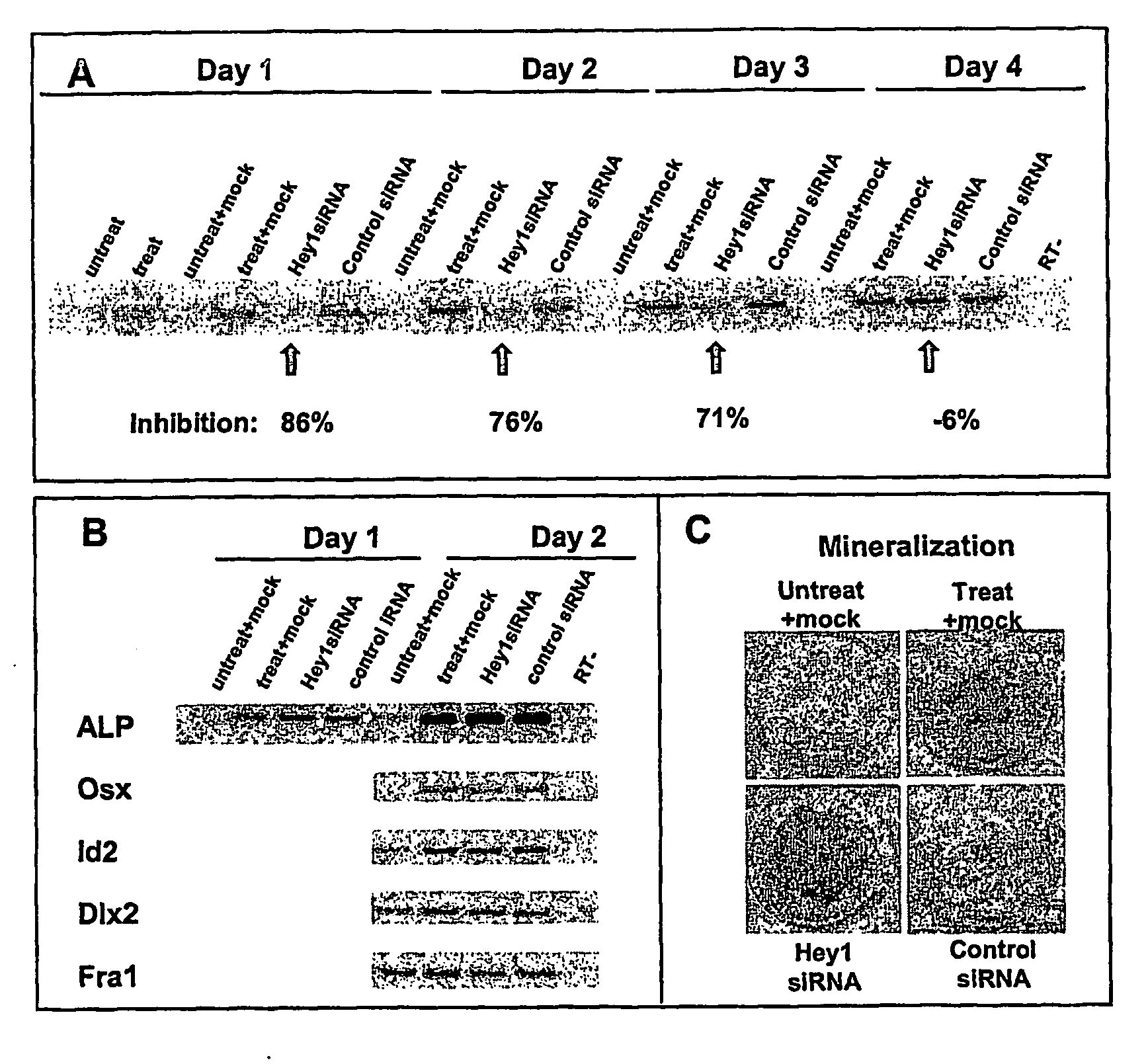Gene expression associated with osteobla st differentiation
a gene expression and osteosarcoma technology, applied in the field of gene expression associated with osteosarcoma cell lines, can solve the problems of difficult to achieve osteosarcoma cell lines and serious conditions
- Summary
- Abstract
- Description
- Claims
- Application Information
AI Technical Summary
Benefits of technology
Problems solved by technology
Method used
Image
Examples
example 1
Osteoblastic Differentiation of MC3T3-1b Cell Line: Cellular and Molecular Characterization
[0061] The instability of osteoblastic phenotype in cell lines in culture is a known phenomenon, leading to divergent properties of an apparently identical cell line. Murine pre-osteoblastic MC3T3-E1 cell line is a very good model of osteoblast differentiation, reproducing in vitro a sequence of several events occurring in vivo (Quarles et al., 1992, J. Bone Miner Res; 7:683-692). In order to obtain a cell line that differentiates in vitro in a fast and efficacious manner, we transfected MC3T3-E1 parental cells with a Cbfa1-dependent reporter gene and selected a clone of MC3T3-E1 cells that responds well to osteogenic stimulus (10 mM GP, 50 μM AA and 200 ng / ml BMP-2). This clone was named MC3T3-1b and characterized with respect to cellular phenotype and molecular markers of differentiation. In response to osteogenic stimulus, MC3T3-1b cell line showed a strong increase in alkaline phosphatase...
example 2
Gene Expression Profiling by DNA Microarray Analysis: Comparison of Osteoblast Marker Expression by rqRT-PCR and Microarrays
[0063] After selection of an appropriate system of in vitro osteoblast differentiation, we set out to perform genome-wide analyses of gene expression during osteoblast differentiation. MC3T3-1b cell line was stimulated with osteogenic stimulus, total RNA was extracted at days 0, 1 and 3 and analyzed by Affymetrix GeneChip microarray U74. This oligonucleotide array represents about 10,000 genes, comprising genes with known function and ESTs. As a validation step in the microarray data analysis, hybridization values obtained for osteoblast marker genes were compared with the data obtained by rqRT-PCR. The GeneChip contained oligonucleotide probes for seven of eight osteoblast markers and for one of two housekeeping genes analysed by rqRT-PCR. For these seven markers and one housekeeping gene, the same trend and a similar fold regulation was observed with two dif...
example 3
Genes Coding for Proteins with Established Function in Osteoblast Differentiation and Regulation of Osteoclast Formation
[0074] We first evaluated the expression of genes with an established function in osteoblast differentiation and osteoclast formation, two main processes in osteoblastic cells (Table 2). The identified genes were grouped into following categories: 1) BMP signaling pathway; 2) BMP target genes; 3) Osteoblast differentiation (including osteoblast markers); and 4) Stimulation of osteoclastogenesis. It should be noted that although the function of these genes has been linked to bone cells, for many of them, this type of regulation during osteoblast differentiation was not previously reported.
[0075] Major components of BMP-2 signaling pathway, SMAD molecules, were shown to be up-regulated 2-3-fold. The mRNA expression of SMAD 6 and 7, the inhibitory SMADs, was transiently up-regulated at day 1 (Table 2). This probably represents a feed-back mechanism for down-regulati...
PUM
| Property | Measurement | Unit |
|---|---|---|
| Gene expression profile | aaaaa | aaaaa |
| Level | aaaaa | aaaaa |
Abstract
Description
Claims
Application Information
 Login to View More
Login to View More - R&D
- Intellectual Property
- Life Sciences
- Materials
- Tech Scout
- Unparalleled Data Quality
- Higher Quality Content
- 60% Fewer Hallucinations
Browse by: Latest US Patents, China's latest patents, Technical Efficacy Thesaurus, Application Domain, Technology Topic, Popular Technical Reports.
© 2025 PatSnap. All rights reserved.Legal|Privacy policy|Modern Slavery Act Transparency Statement|Sitemap|About US| Contact US: help@patsnap.com

